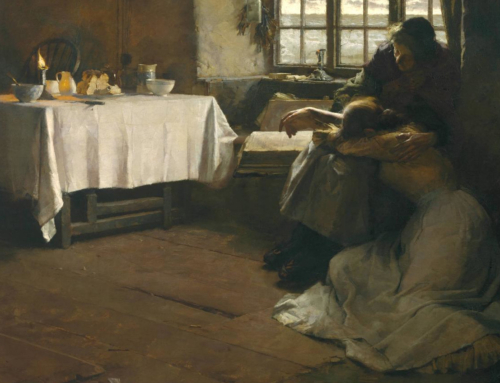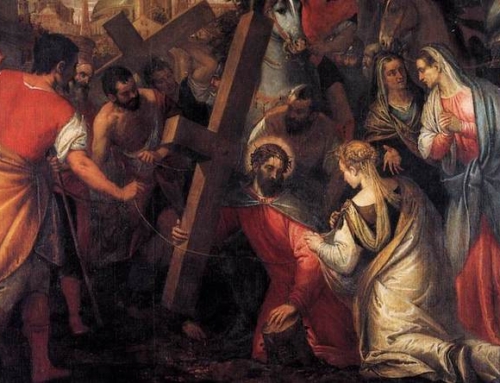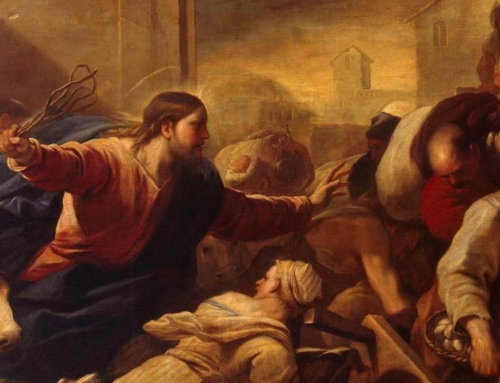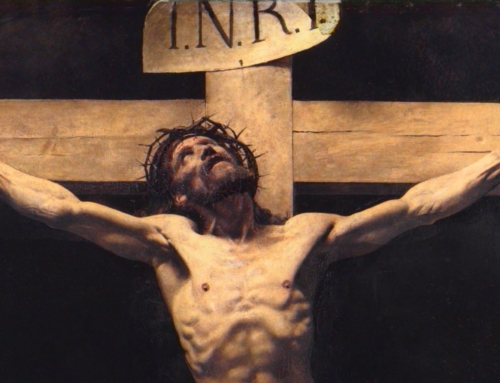In Holy Week, we experience more than ever the interpenetration of Lent and Easter. Our focus on the Passion is growing, even as we prepare for our Easter celebration. On Friday, the Church makes procession to venerate the Cross, then again to receive the Risen Lord in the Eucharist. It is the hope (and grace) of Easter that enables us to bear the grace of penance, and it belongs to the joy of Easter not only that the Lord is alive, but that he is risen, having been dead.
So it is not out of place for us to consider the meaning of Resurrection in this week dedicated to the death that precedes it. In fact, the light of the Resurrection discloses to us the meaning of the death of Christ. So let us take a moment to consider the light and glory of the Resurrection—the light by which Christ guides us through the dark valley of the Triduum.
In the Old Testament, we find many “types” of Christ’s Resurrection, that is, icons or images of his glorious overcoming of death. You might think of the people of Israel coming up out of Egypt, the Prophet Jonah being spit out by the whale, or the man coming back to life after being thrown into the grave of the Prophet Elisha (2 Kings 13:21). But we notice something about all of these: they are all an “undoing,” a turning back of a process of death or descent. They are a return of someone who has been cast down into darkness—slavery in Egypt, the sea, the grave. Consider again the sign given to Hezekiah, king of Judah, whose healing is another type of Christ’s Resurrection. When Hezekiah had fallen into a deathly illness, he cried out to the Lord, and the Prophet Isaiah sent him word that the Lord had heard him and that he would receive fifteen more years of life. Isaiah continues,
“This will be the sign for you from the Lord that the Lord will carry out the word he has spoken: See, I will make the shadow cast by the sun on the stairway to the terrace of Ahaz go back the ten steps it has advanced.” So the sun came back the ten steps it had advanced. (Isaiah 38:7–8)
This sign, chosen by the Lord, especially reminds us of “turning back the clock,” an “undoing” for a time.
But Christ’s Resurrection is unique, different from all these “types.” All of these rose from their death only to die again. The people eventually returned to slavery, and each of our other examples died after his gift of years was spent. Christ rises, however, in the glory of his Eternal Sonship, so he rises never to die again.
This Sonship is the light of the Resurrection. This Sonship is the very life of the Word of God, most wonderfully manifest in the humanity of Jesus after the Resurrection. It is the life of one one who remains marked by his wounds, but not weak. The glory of one who is initially unrecognizable because he is unimaginably himself—so much himself that a touch of his wounds brought the Apostle Thomas to faith. This is the Sonship of one who died and then rose, never again to die. In the Old Testament “types,” God proved the depth of his care for his people by “turning back” the deaths they had suffered. Now, God proves the Sonship of Jesus by showing that its depth cannot be touched by the pride of that great destroyer, death.
As we unite our weakness and sufferings with Christ’s Passion in this week, let us remember the Sonship that is now shared by all the baptized, even as it belonged to Christ in every moment of his life. This is the Sonship that will shine on Easter, the light that is uncovered on the cross.
✠






